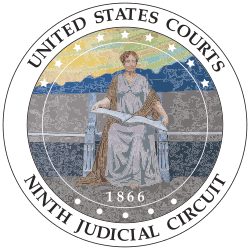Arakaki v. State of Hawai'i facts for kids
Quick facts for kids Arakaki v. State of Hawai'i |
|
|---|---|
 |
|
| Court | United States Court of Appeals for the Ninth Circuit |
| Full case name | Earl F. Arakaki, Evelyn C. Arakaki, Patrick Barrett, Sandra P. Burgess, Edward U. Bugarin, Patricia A. Carroll, Robert M. Chapman, Brian Clarke, Kenneth R. Conklin, Michael Y. Garcia, Toby M. Kravet, Thurston Twigg-smith, and Jean Yokoyama v. State of Hawaii, Benjamin J. Cayetano, in His Official Capacity As the Governor of the State of Hawaii, Dwayne D. Yoshina, in His Official Capacity As Chief Election Officer of the State of Hawaii |
| Argued | May 6, 2002 |
| Decided | December 31, 2002 |
| Citation(s) | 314 F.3d 1091 |
| Case history | |
| Prior history | No. 00-cv-514 (D. Haw.) |
| Court membership | |
| Judge(s) sitting | J. Clifford Wallace, A. Wallace Tashima, Richard C. Tallman |
| Case opinions | |
| Majority | Tashima, joined by Tallman |
| Concurrence | Wallace |
Arakaki v. State of Hawai'i was an important legal case in 2002. It challenged a rule in Hawaii that said only people of Hawaiian ancestry could run for a special government board. This board is called the Office of Hawaiian Affairs. The lawsuit argued that this rule was unfair and went against the U.S. Constitution.
Contents
What was Arakaki v. State of Hawai'i?
This lawsuit, known as Arakaki v. State of Hawai'i, was about who could run for a special government group in Hawaii. The case was heard by the United States Court of Appeals for the Ninth Circuit. This court makes decisions about laws for several western states, including Hawaii.
The Office of Hawaiian Affairs
The Office of Hawaiian Affairs (OHA) is a unique government agency in Hawaii. Its main job is to improve the well-being of Native Hawaiians. This includes looking after their land, culture, and social programs. The OHA board of trustees helps make decisions for the agency.
Why the Lawsuit Started
In 2000, a person named Kenneth R. Conklin wanted to run for a seat on the OHA board. However, he was told he could not because he was not of Hawaiian ancestry. This rule stopped him from even applying to be a candidate.
Because of this, Kenneth Conklin and 12 other people decided to file a lawsuit. They believed the rule was unfair. They felt it stopped people from having an equal chance to be elected.
What the Lawsuit Claimed
The lawsuit argued that the rule about Hawaiian ancestry was against the U.S. Constitution. Specifically, it claimed the rule violated two important parts of the Constitution:
- The Fourteenth Amendment: This amendment says that all people should have equal protection under the law.
- The Fifteenth Amendment: This amendment protects the right to vote and says that states cannot stop people from voting based on their race.
The lawsuit also mentioned the Voting Rights Act. This law aims to stop unfair voting practices.
The Court's Decision
In August 2000, a judge named Helen Gillmor made a decision in the case. She ruled that people who were not of Hawaiian ancestry could run for OHA trustee. This meant that the rule stopping them was put aside for a time.
After this ruling, Kenneth Conklin decided to run for an OHA trustee position in November 2000. He did not win the election, but he showed that people from all backgrounds could now try to get a seat on the board.

